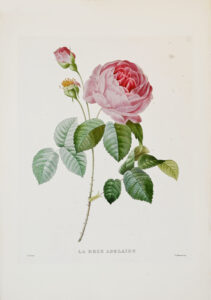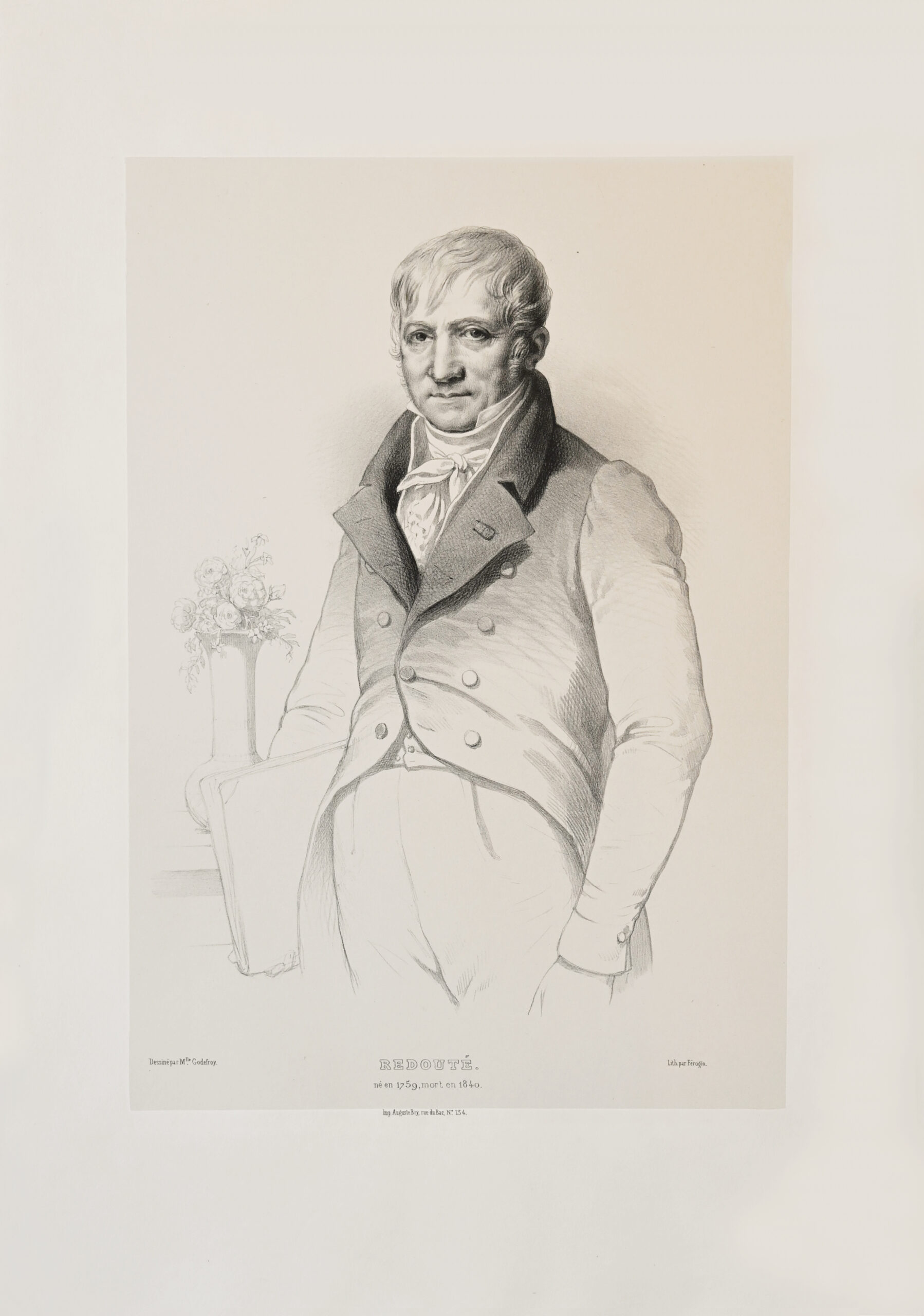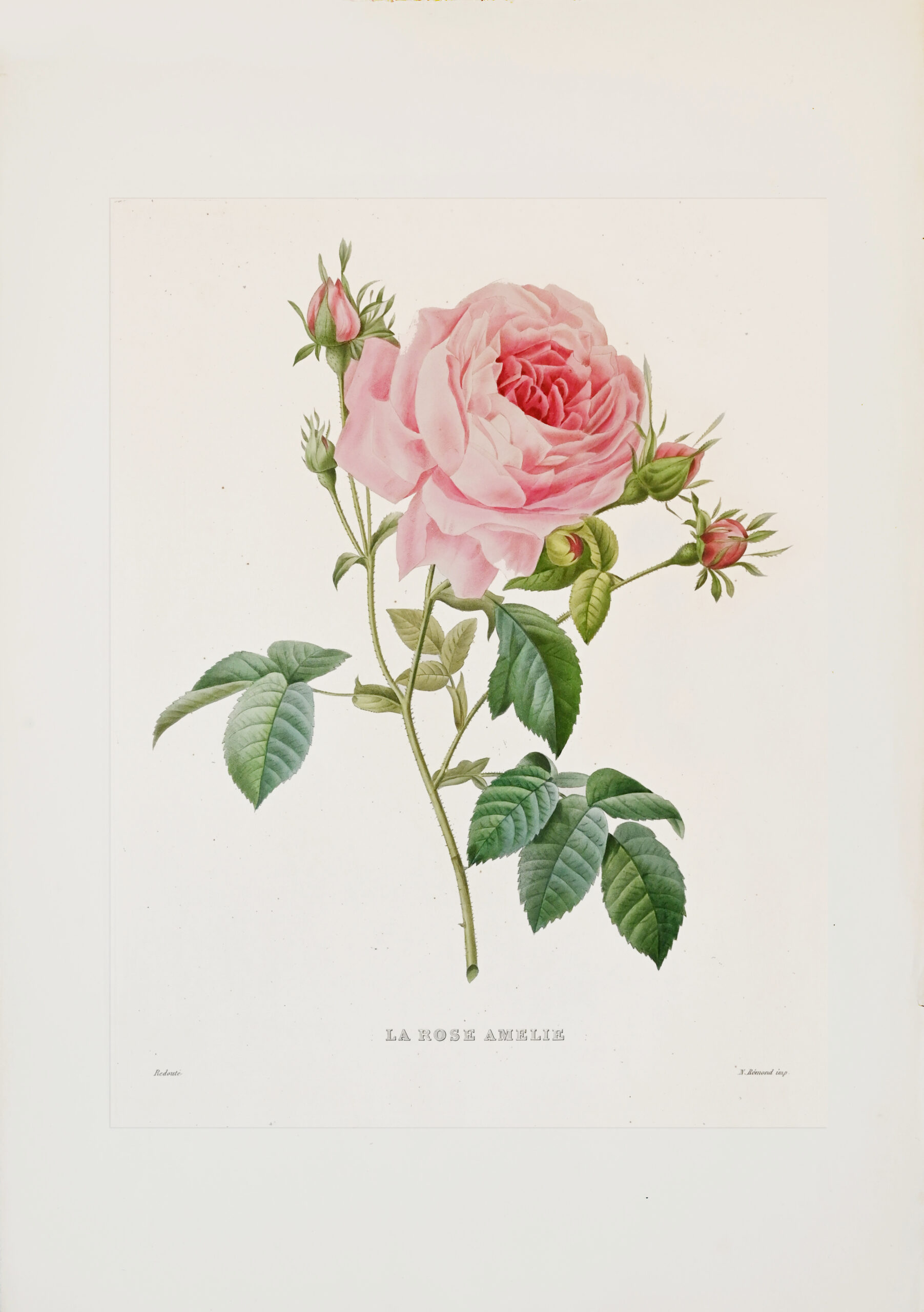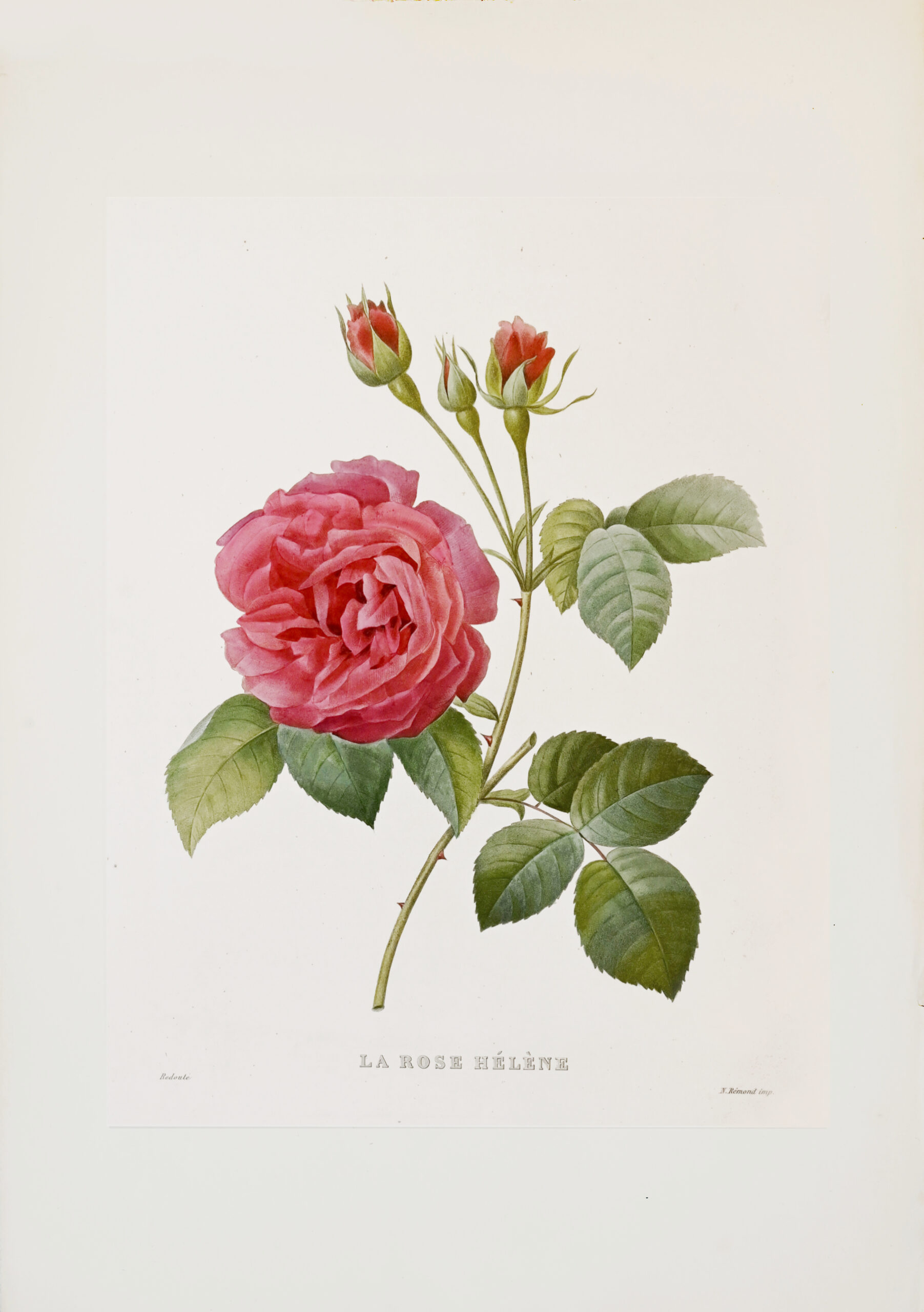Paris, chez les Marchands de Nouveautés (typ. Lacrampe et Camp.), 1843.
In-folio, 3 ll. (half-title, title and dedication to the queen), portrait lithographed by Ferogio after Mlle. Godefroy, 4 plates colored by N. Remond after Redouté, preserved in its contemporary yellow printed cover.
460 x 320 mm.
Original edition, second issue.
MacPhail 24; Nissen, BBI 1590; Great Flower Books 72; de Belder 293, Catalogue du baron Pichon, n°6210; Brunet, IV, 1175.
This is the last work of the Belgian painter and botanist Pierre-Joseph Redouté (1759–1840), nicknamed the “Raphaël des fleurs”.
It was chosen to appear in An Oak Spring Flora because it characterized the “elegant period” of the artist at the end of his life, when “his watercolors were no longer meticulously painted ‘from nature’, but were the result of perfect technique.”
“The ‘Bouquet’ contains hand-colored engravings of four roses not included in his masterful monograph on the flower — the rose Clémentine, the rose Amélie, the rose Adélaïde and the rose Hélène — as well as a portrait of Redouté lithographed by François-Forunte-Antoine Ferogio after Marie Eléonore Godefory.”
“The last work of Redouté was a selection of several roses, published after his death, under the title ‘Bouquet royal’ and dedicated, by his widow Marthe Gobert, to the reigning family of France.”
His talent was such that he withstood the turbulent politics of his time to serve as court painter and art instructor to Marie-Antoinette, to the two empresses (Joséphine and Marie-Louise) and to Queen Marie-Amélie. The artist painted numerous botanical specimens, but it was with roses that he excelled, creating what some have called “portraits” of the queen of flowers. The delicate outlining and careful coloring give his roses an extremely realistic, almost three-dimensional quality. To reproduce his paintings for books, Redouté turned to stipple engraving. He had been introduced to the technique by Francesco Bartolozzi and had discovered that the use of dots, rather than simple lines, created the subtly shaded effect he sought. He invented his own method of stipple engraving, combining it with an innovative color-printing process that beautifully reproduced his paintings. This work published posthumously was first published in 1843 by the Marchands de Nouveautés and was dedicated by Redouté’s widow and daughter to the artist’s last royal patron Marie-Amélie de Bourbon (1782–1866). Our edition was published the following year for Mademoiselle Redouté. We have been able to trace only one auction sale of the 1844 edition: the Belder copy, sold by Sotheby’s in 1987 for £3,800 ($6,194) 36 years ago. The 1843 edition has been sold four times at auction since 1976, but all these copies have suffered from some degree of browning and foxing on the plates, fortunately absent from the present copy.
Superb copy preserved as published in 1843.







